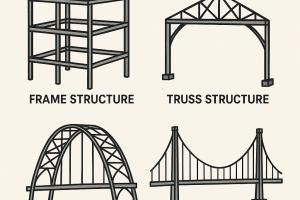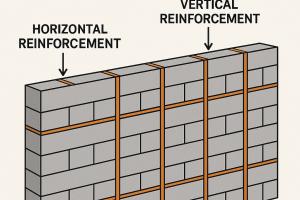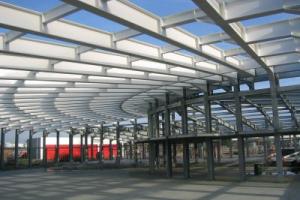Factors Affecting Failure in Steel Structures

Factors Affecting Failure in Steel Structures
Failure in steel structures can occur due to various factors and modes of failure. Here are some common types of failures that can affect steel structures:
1. Buckling:
Buckling occurs when a structural member, such as a column or beam, experiences compressive forces that exceed its critical buckling load. This can result in sudden and catastrophic failure, leading to the collapse of the structure. Buckling can be caused by inadequate bracing, insufficient column design, or excessive loads.
2. Yielding:
Yielding happens when the stress in a steel member exceeds its yield strength. This leads to permanent deformation and loss of load-carrying capacity. Yielding can occur in tension or compression, depending on the direction and magnitude of the applied forces.
3. Fatigue:
Fatigue failure occurs when a steel structure experiences repeated cyclic loading over time, leading to the initiation and propagation of cracks. These cracks can grow and eventually cause sudden failure, even under loads lower than the material's ultimate strength. Fatigue failure is a significant concern in structures subjected to fluctuating or dynamic loads, such as bridges or rotating machinery.
4. Fracture:
Fracture failure occurs when a steel member or connection undergoes brittle fracture, resulting in a complete separation of the component. This type of failure typically occurs under high-stress concentrations, such as notches or discontinuities, and can be triggered by a sudden impact or overload.
5. Corrosion:
Corrosion is a gradual deterioration of steel due to chemical reactions with the environment. It weakens the material and reduces its load-carrying capacity. Corrosion can occur in various forms, such as general corrosion, localized pitting, or galvanic corrosion. Structures exposed to harsh environments or lacking proper corrosion protection are more susceptible to corrosion-related failures.
6. Connection Failure:
Connections between steel members can also be a point of failure. Inadequate design, improper installation, or insufficient strength of bolts, welds, or other fasteners can result in connection failure. This can lead to a loss of structural integrity and compromised load transfer.
It is important to note that proper design, construction, and maintenance practices can help prevent or mitigate these failure modes in steel structures. Structural engineers carefully consider factors such as load calculations, material selection, design codes, and quality control measures to ensure the safety and reliability of steel structures. Regular inspections and maintenance are also essential to detect and address potential issues before they lead to failure.





